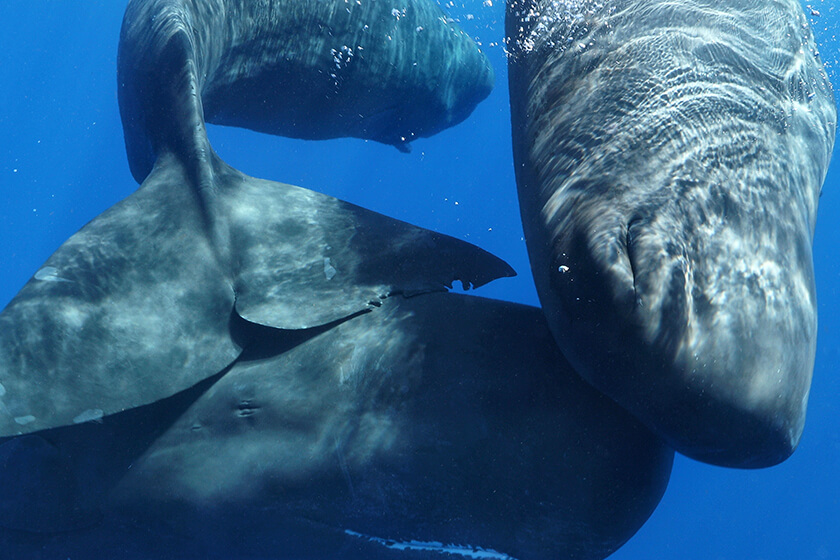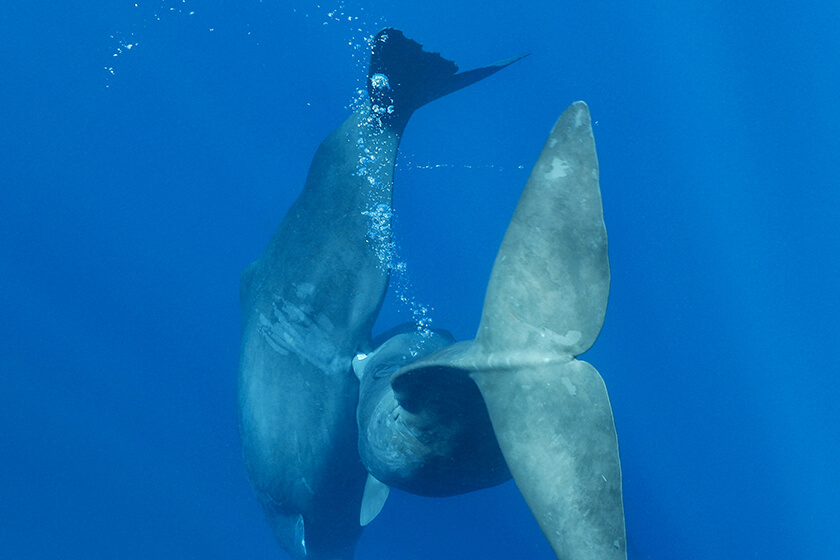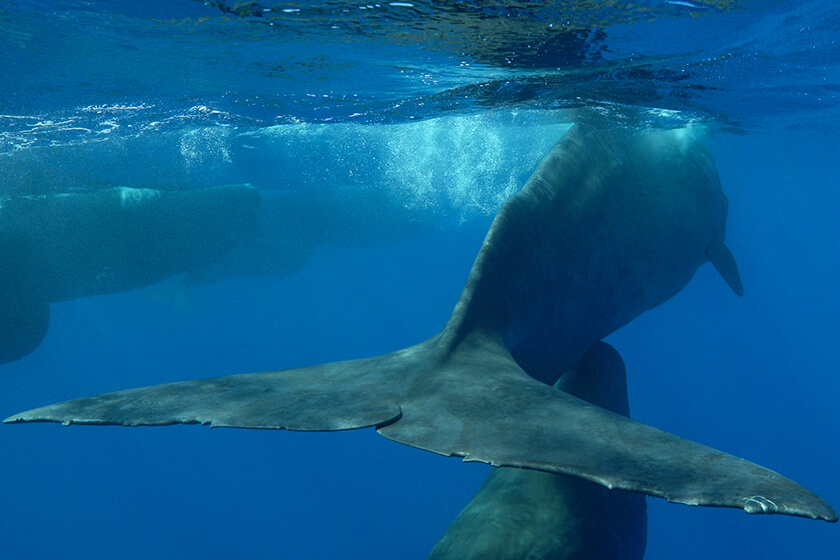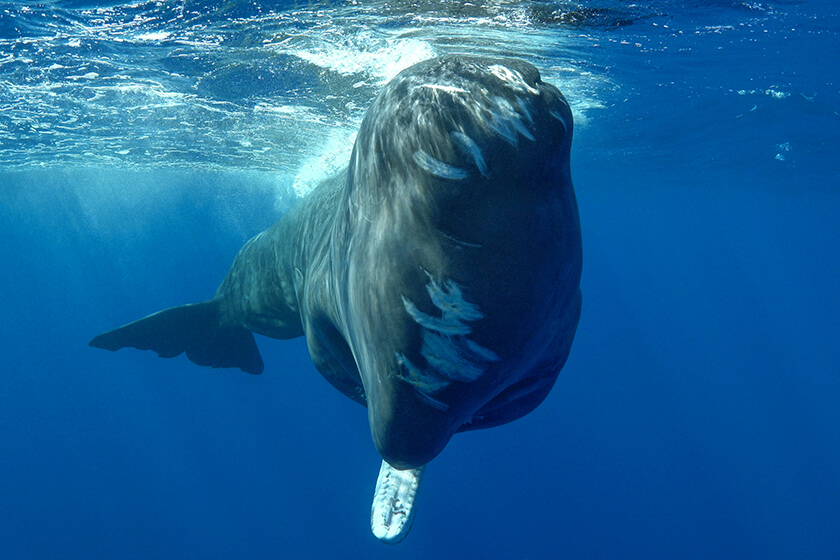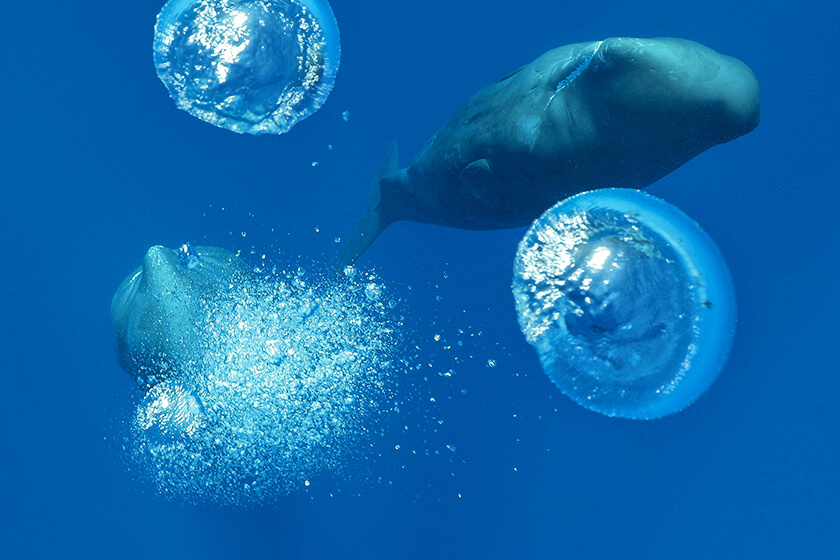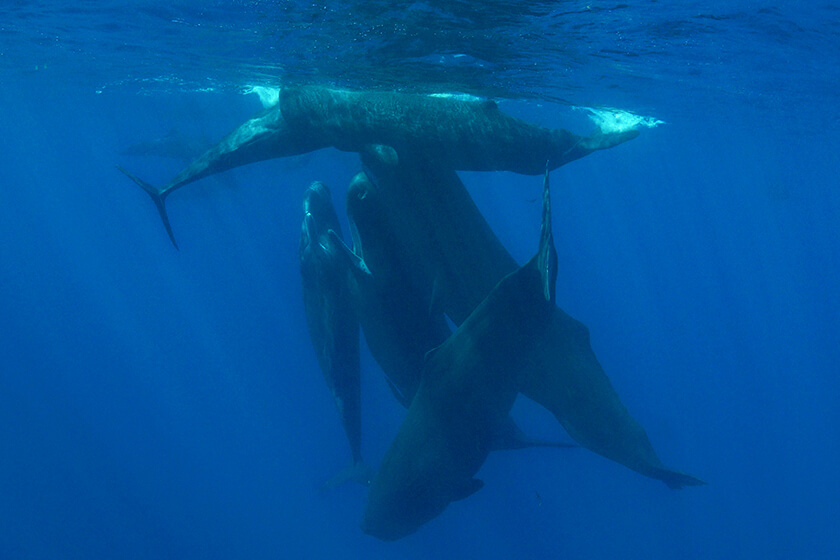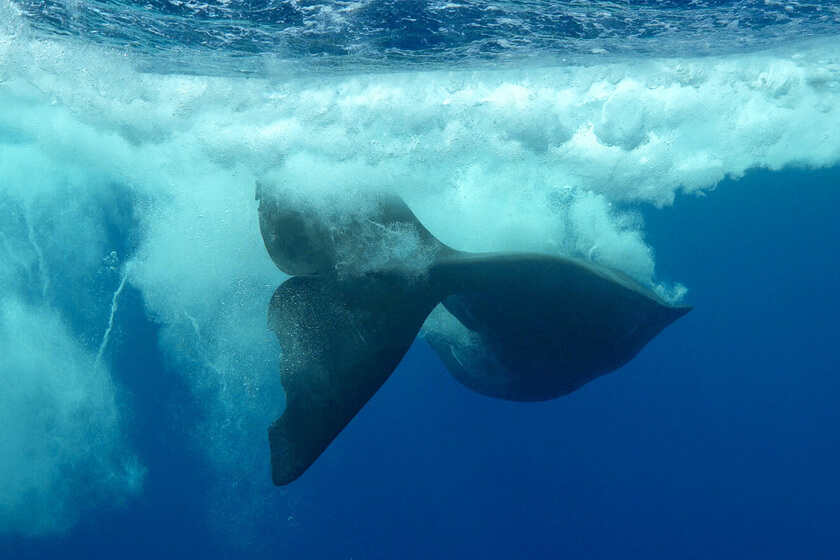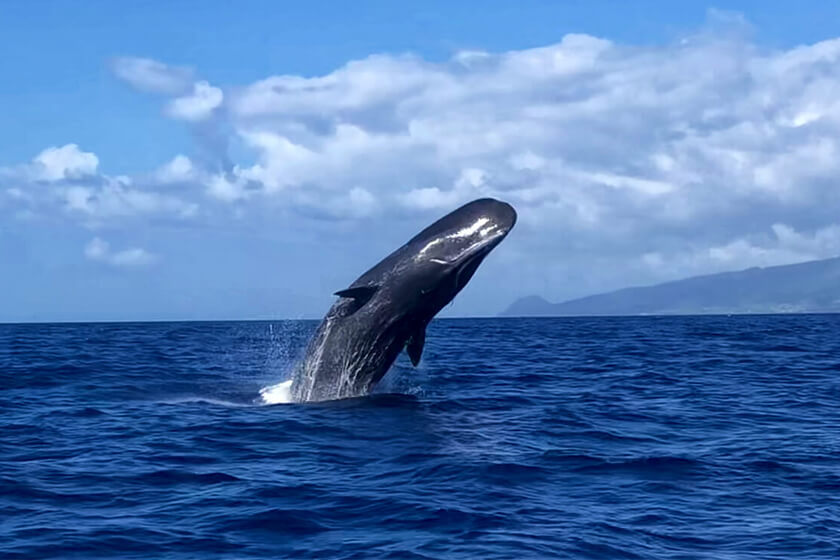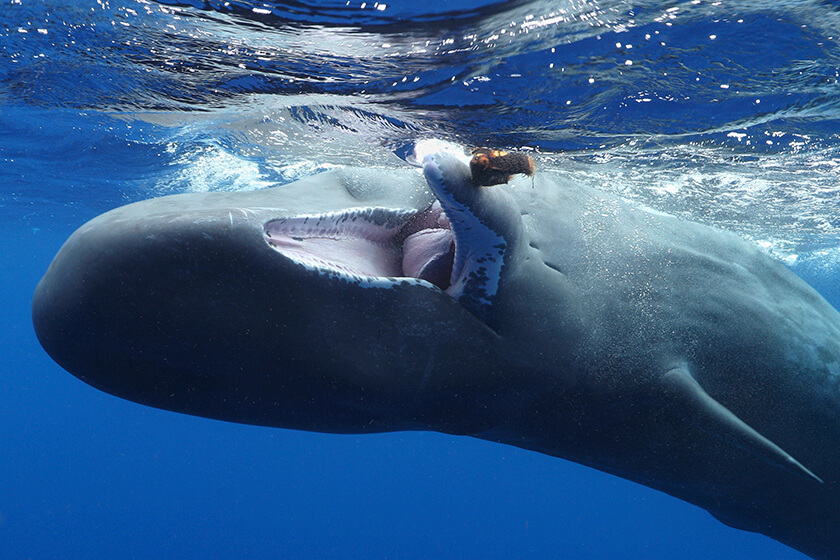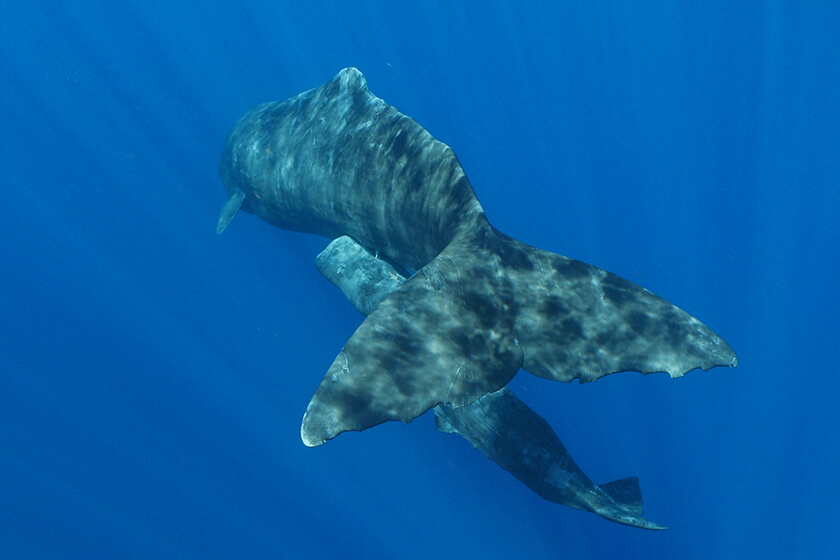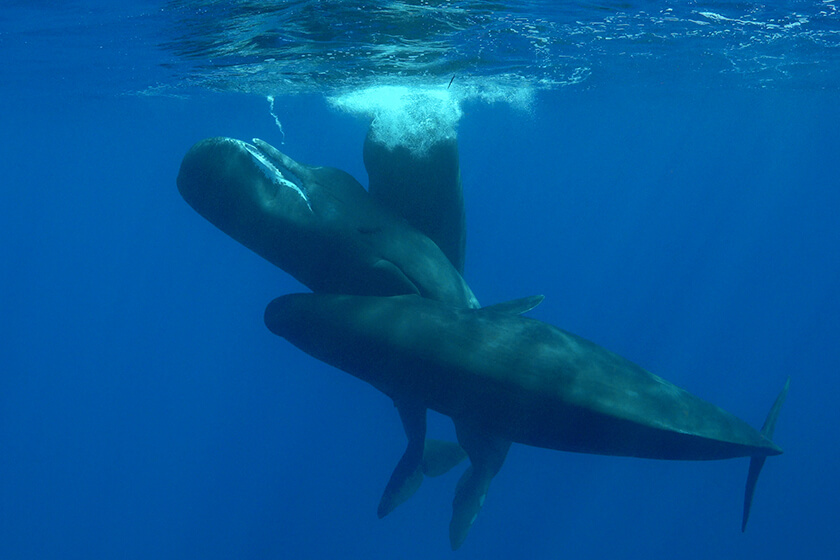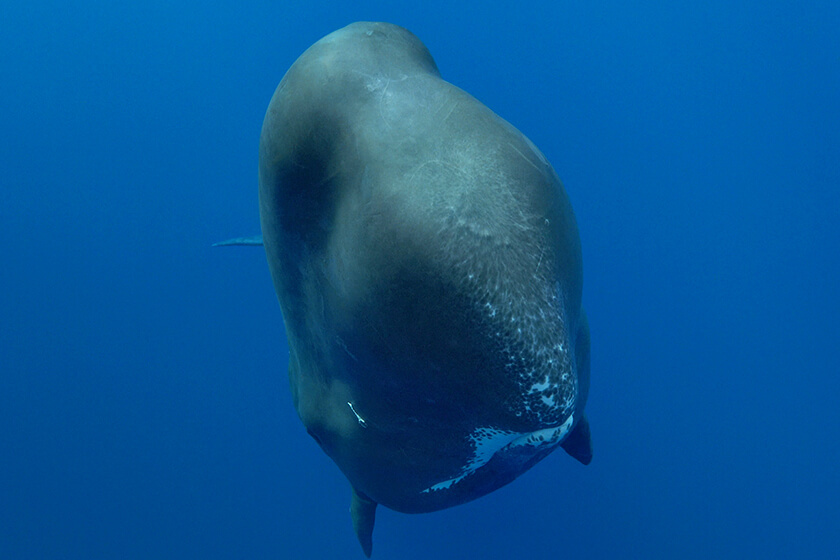Behaviors: Socializing
Our favorite sperm whale activity is the act of socialization, when we have the opportunity to observe them dance, twirl, and play together. Until they are seen in action, it is impossible to imagine the fluid athleticism of these massive, torpedo-shaped beings who move through the water with astonishing flexibility, grace and agility.
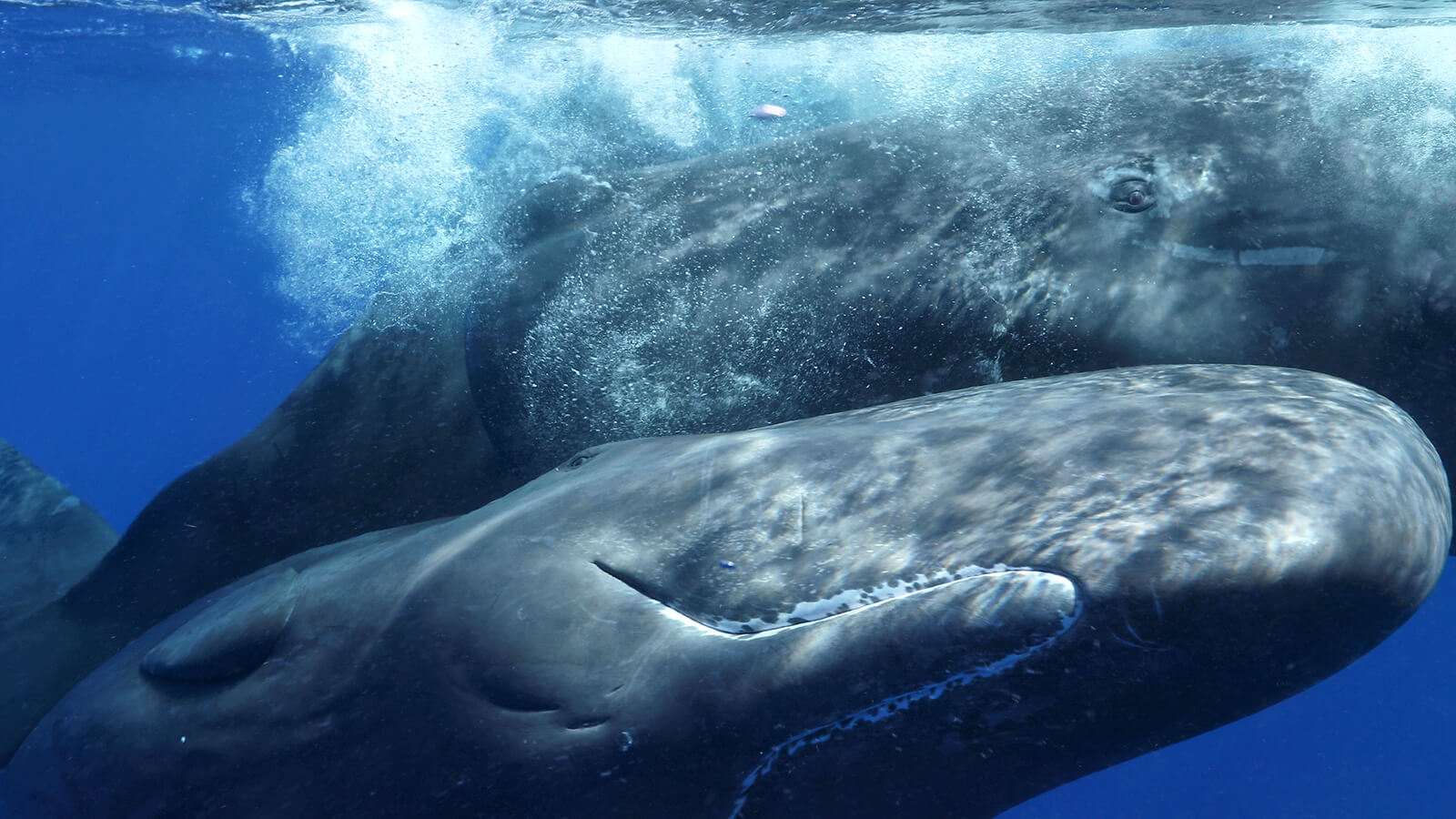
Sperm whales spend an estimated 70 – 75% of their lives deep underwater foraging and a significant portion of their time closer to the surface traveling. When they slow their pace to sleep– and better yet socialize, it is a joyful event to witness. Periodically, and most likely after highly successful hunting episodes, the whales pause to rest, unwind, and maintain their social connections.
Socialization behavior can occur within singular social units but often includes one or more additional groups. Off the coast of Dominica, groupings of up to seventy sperm whales have been observed exhibiting this gregarious activity. The whales purposely come together to relax, cultivate friendships and family alliances, and enjoy one another’s company. These gatherings can last for a few hours to several days.
During periods of socializing, the whales participate in various activities that foster affinity and strengthen social bonds. They communicate effusively and engage in kinesthetic forms of interaction, frequently rubbing against or nuzzling one another. Juveniles and calves enjoy rigorous bouts of play that involve jostling, bubbling, twirling, intertwining their bodies, and jawing each other with open mouths and mock ferocity. These behaviors are performed with the elegance of a choreographed dance.
While these gatherings serve to nurture social relationships, there are also physiological benefits resulting from some of the physical activity. Play sessions offer the younger whales an excellent opportunity to exercise vigorously at the surface, which may help to develop the musculature and stamina needed for their diving and hunting requirements as adults.
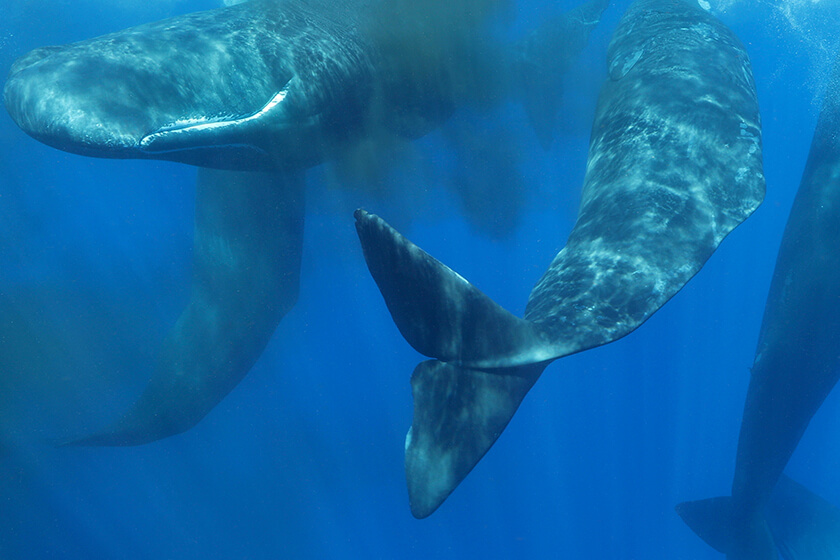
Sperm whales continuously slough off patches of their skin on a daily basis. This is thought to occur as a natural antifouling mechanism to prevent incrustation by marine parasites and perpetuate healthy skin. The tactile interactions that occur during socializing include a great deal of body-rubbing, which may accelerate the exfoliation or sloughing of skin.
Another interesting occurrence is the propensity for the whales to defecate en masse when socializing. Sperm whales eat constantly and defecate regularly. They often do so while swimming on the surface and prior to diving, releasing their bowels in clouds of liquified excrement which can act as a smokescreen to camouflage their sudden departure. While socializing, the whales have a tendency to defecate in unison, for example when they are in the midst of a playful romp. Why they do so in this setting remains unclear.
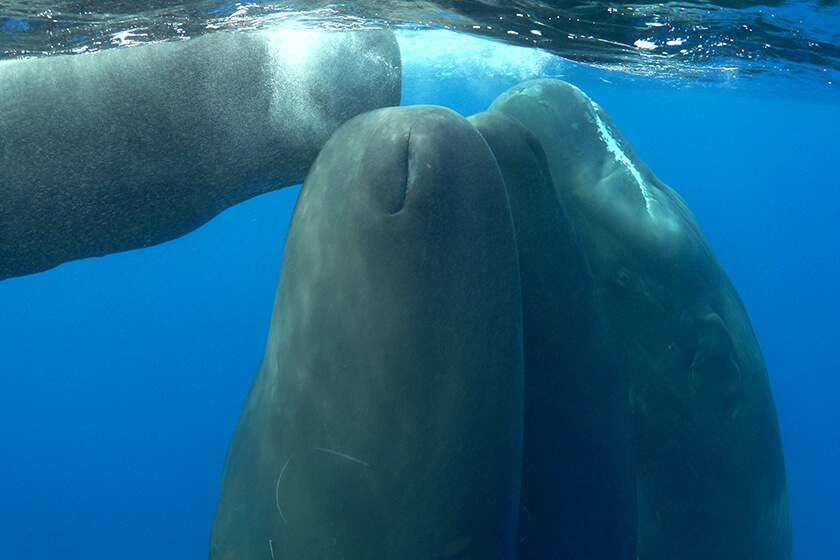
A potential benefit of socialization among mixed groups is that these gatherings provide training for young males in preparation for their eventual departure from their social units. The males are given an opportunity to practice social autonomy and develop a sense of independence from their primary family group while remaining in a supportive social environment. This may be a first step towards merging with young males from other units to form bachelor groups as part of their maturation process.
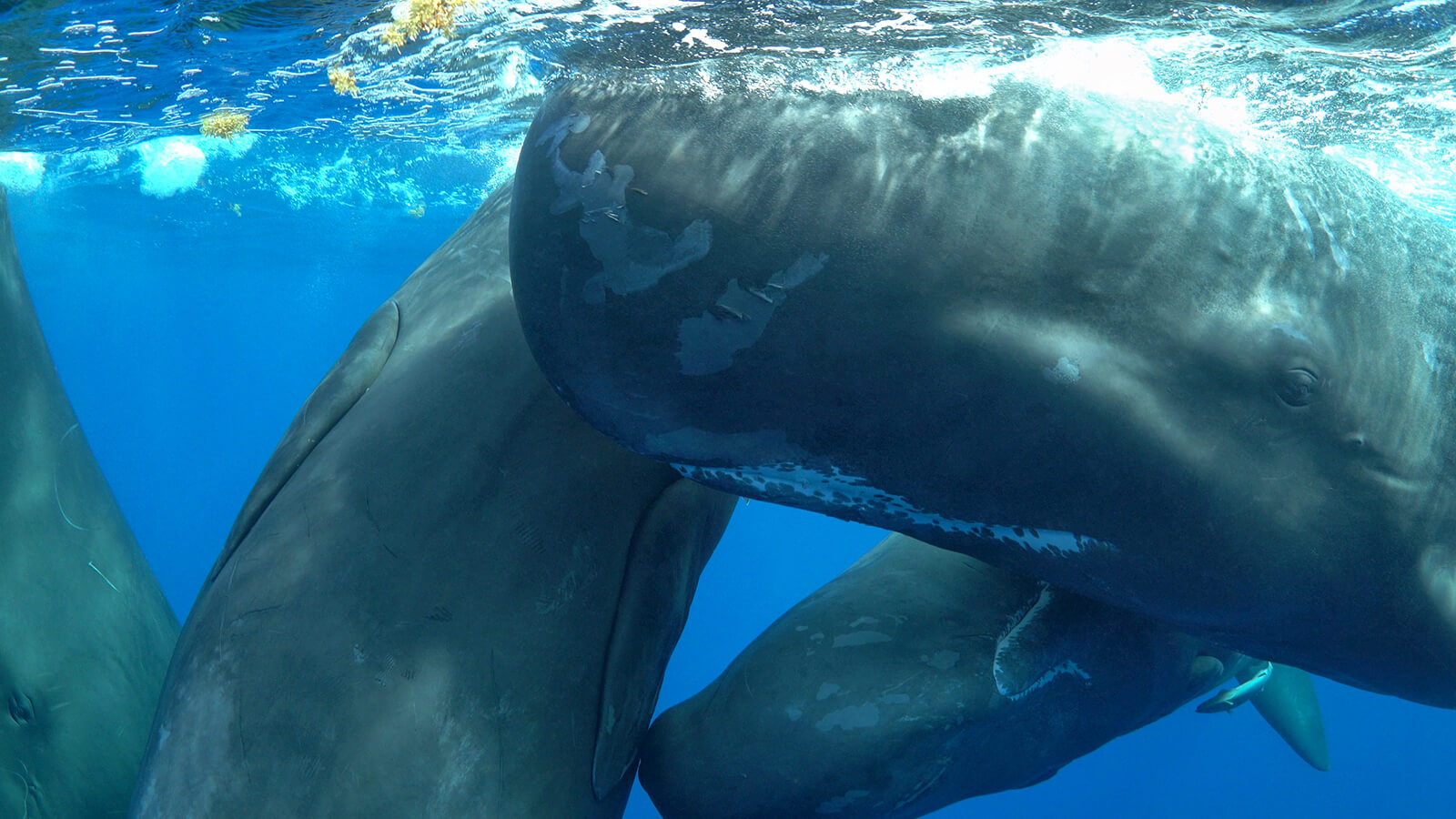
As discussed in our Connect section, the existence of spindle neurons in the brains of sperm whales provide the impetus for intentional acts of social bonding. These specialized cells for socializing, also called ‘von Economo’ neurons, not only support the formation of enduring relationships, but also enable the whales to behave with conscious specificity in social settings. In other words, they are biologically wired to exercise emotional discernment. As with humans, whales enjoy the company of some individuals more so than others.
Sperm whales demonstrate preferences for favorite friends as they perform their daily activities. They gravitate towards their closest friends, often swimming in nearer proximity and communicating more frequently with favored companions. We notice however that during periods of socialization, the whales expand their friendship circles to include interaction with other members of their units or with individuals from the other groups.
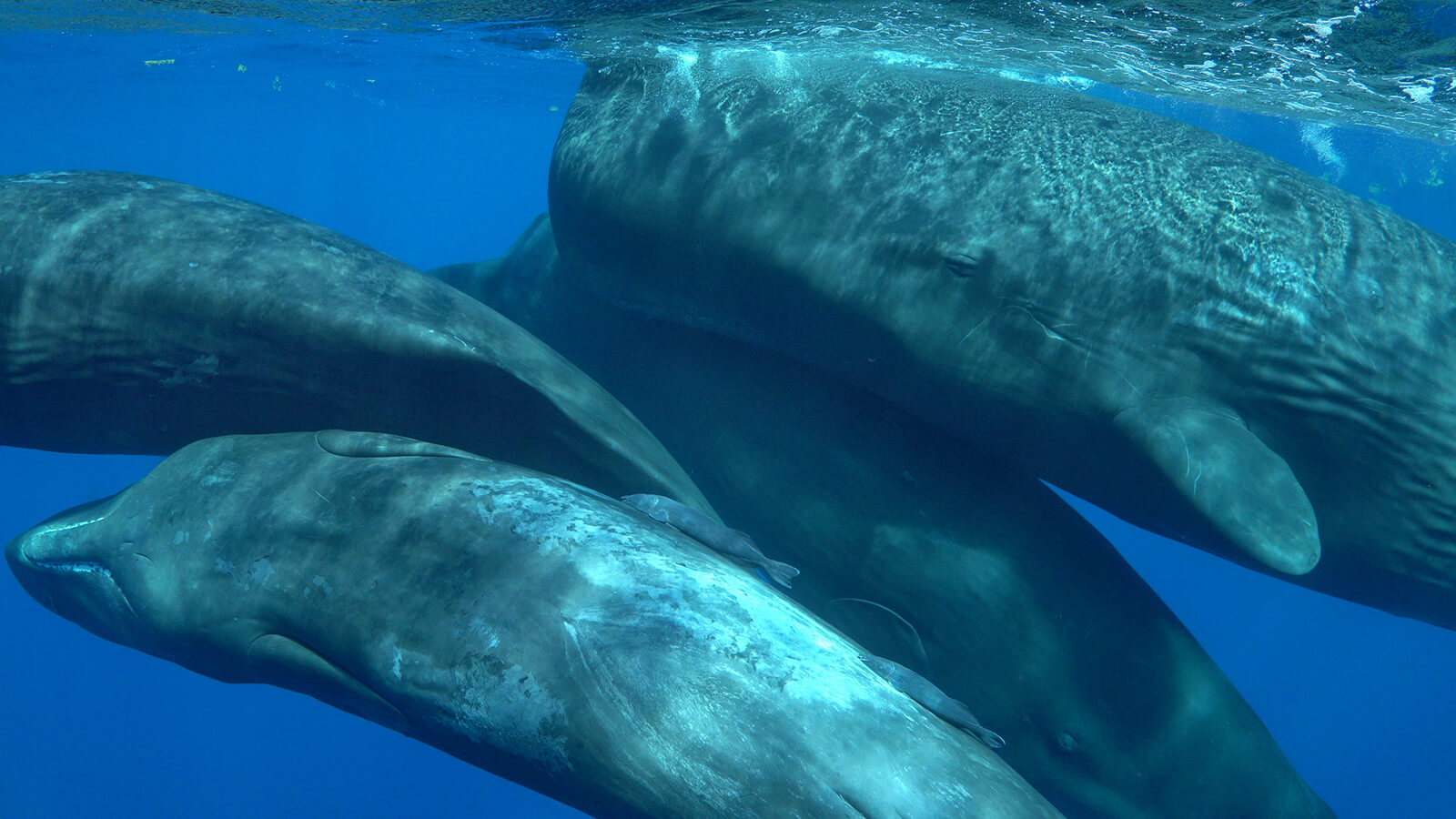
We have observed and documented the whales socializing on several occasions solely among members of their own unit and also as blended groups. In a favorite encounter, we witnessed three calves from Unit A mouthing and bumping one another as they creaked, bubbled, twirled and intertwined their bodies in raucous play amid a row of sleeping adults. They continued their high-spirited, mesmerizing sport for five minutes before rousing the adults, defecating en masse, and swimming away as a group.
The best way to appreciate this phenomenon is through our video representations.
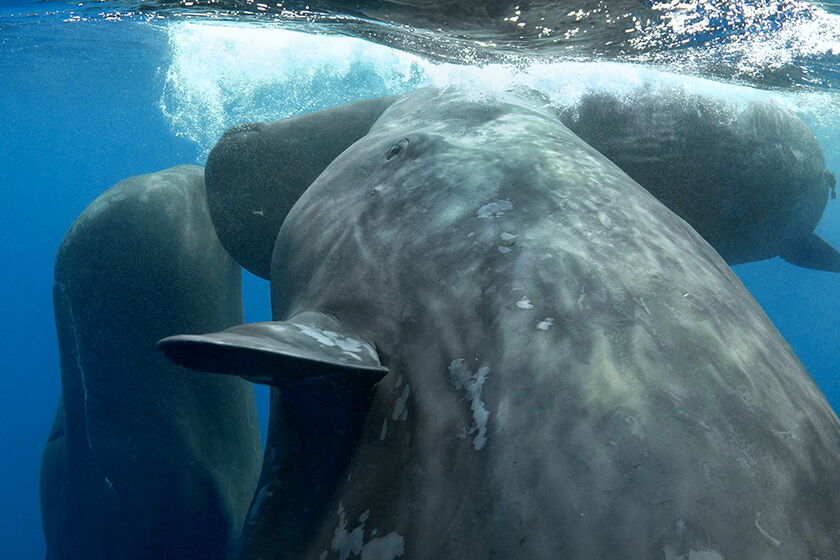
Socializing Calves, Unit A Dec 8, 2019
